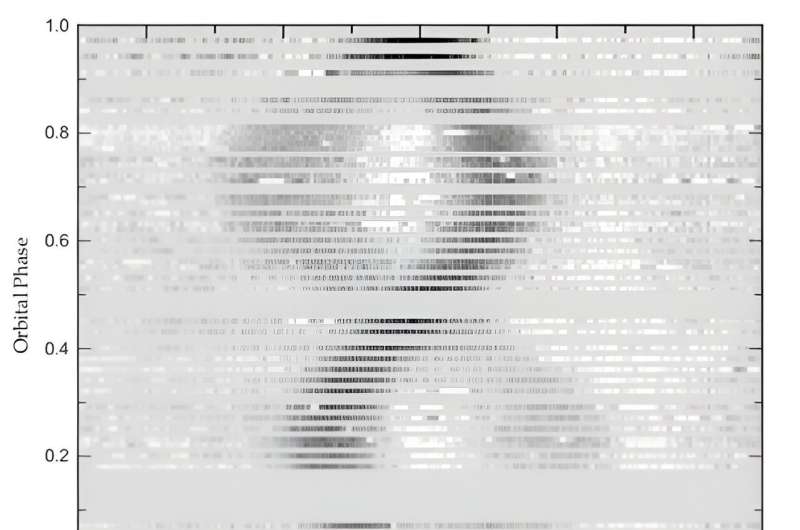January 4, 2024 report
This article has been reviewed according to Science X's editorial process and policies. Editors have highlighted the following attributes while ensuring the content's credibility:
fact-checked
preprint
trusted source
proofread
Pulsations detected from the XZ Ursae Majoris system

Astronomers have conducted a photometric and spectroscopic study of an Algol-type binary, known as XZ Ursae Majoris (or XZ UMa for short). Results of the study, presented in a paper published December 21 on the pre-print server arXiv, indicate that this binary is a pulsating system.
Algol-type binaries are a class of eclipsing binary stars related to the prototype member of this class, known as Beta Persei or Algol. They are semi-detached systems whose less-massive component transfers mass to the more massive component due to filling its Roche lobe, causing mass and angular momentum loss.
XZ UMa is a semi-detached Algol-type system with a spectral type of A5+F9. It has an orbital period of approximately 1.22 days and the primary component of the system is estimated to have an effective temperature of about 7,766 K.
Previous observations have suggested that XZ UMa exhibits pulsations; however, no evidence confirming this hypothesis has been found. Some studies also found that the orbital period of XZ UMa changed over the years, which pointed to the presence of a third object in the system about half as massive as the sun.
In order to verify these theories, a team of astronomers led by Jae Woo Lee of the Korea Astronomy and Space Science Institute in Daejeon, South Korea, have conducted high-resolution spectroscopic observations of XZ UMa with the Bohyunsan Observatory Echelle Spectrograph and the 1.8-m telescope at Bohyunsan Optical Astronomy Observatory (BOAO). The study was complemented by photometric data from NASA's Transiting Exoplanet Survey Satellite (TESS).
Lee's team managed to identify at least six possible independent pulsation frequencies of XZ UMa. Their periods and constants of these pulsations were measured to be between 28 and 37 minutes, and 0.013–0.016 days, respectively. The pulsational-orbital-period ratios for the high frequencies turned out to be 0.016–0.021, suggesting that the primary star XZ UMa A is a Delta Scuti-type pulsator.
The study found that XZ UMa A has a rotational velocity of approximately 80 km/s, which suggests that it is likely currently in a super-synchronous state. The effective temperature of XZ UMa A was measured to be 7,940 K, while its metallicity turned out to be at a level of -0.15. The primary star was found to be about 76% larger and slightly more than two times more massive than the sun.
When it comes to the secondary star, the findings indicate that it has a radius of about 2.48 solar radii but its mass is only 1.35 solar masses. The effective temperature of XZ UMa B is estimated to be 5,162 K.
Summing up the results, the authors of the paper concluded that XZ UMa Delta Scuti-type eclipsing binary in a semi-detached configuration.
More information: Jae Woo Lee et al, Absolute Properties of the Oscillating Eclipsing Algol XZ Ursae Majoris, arXiv (2023). DOI: 10.48550/arxiv.2312.13642
Journal information: arXiv
Provided by NASA
© 2024 Science X Network




















